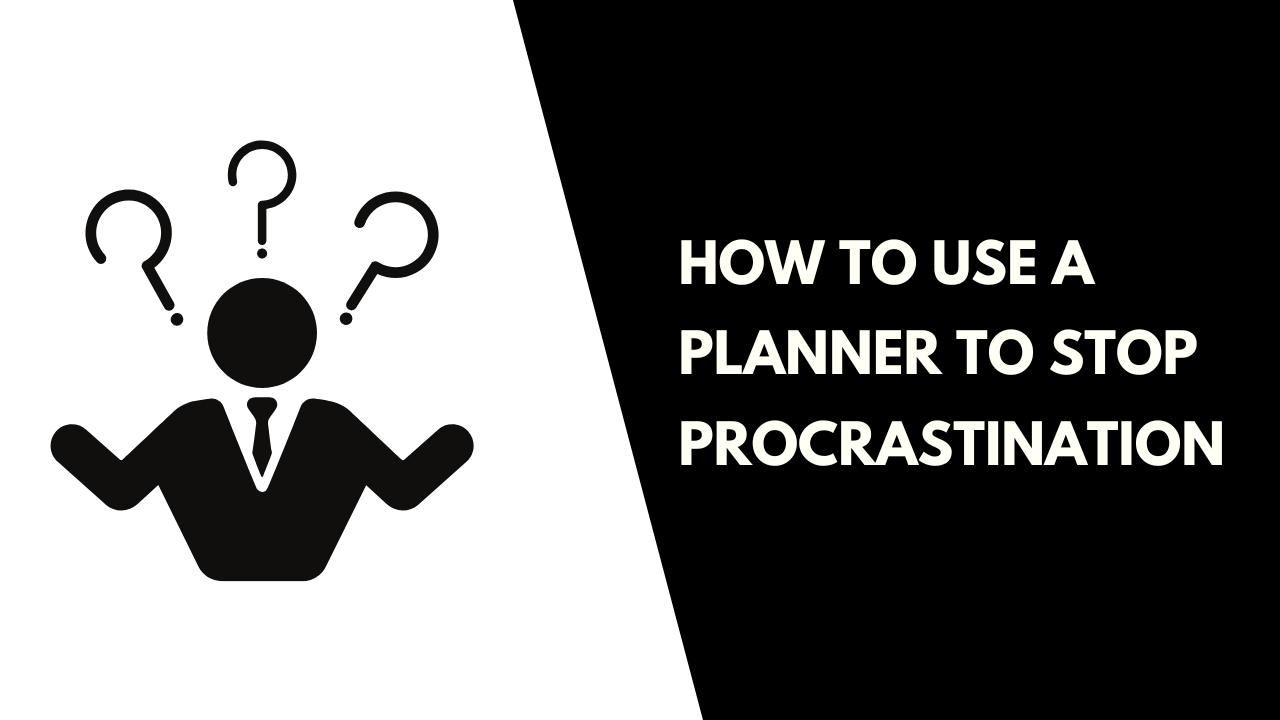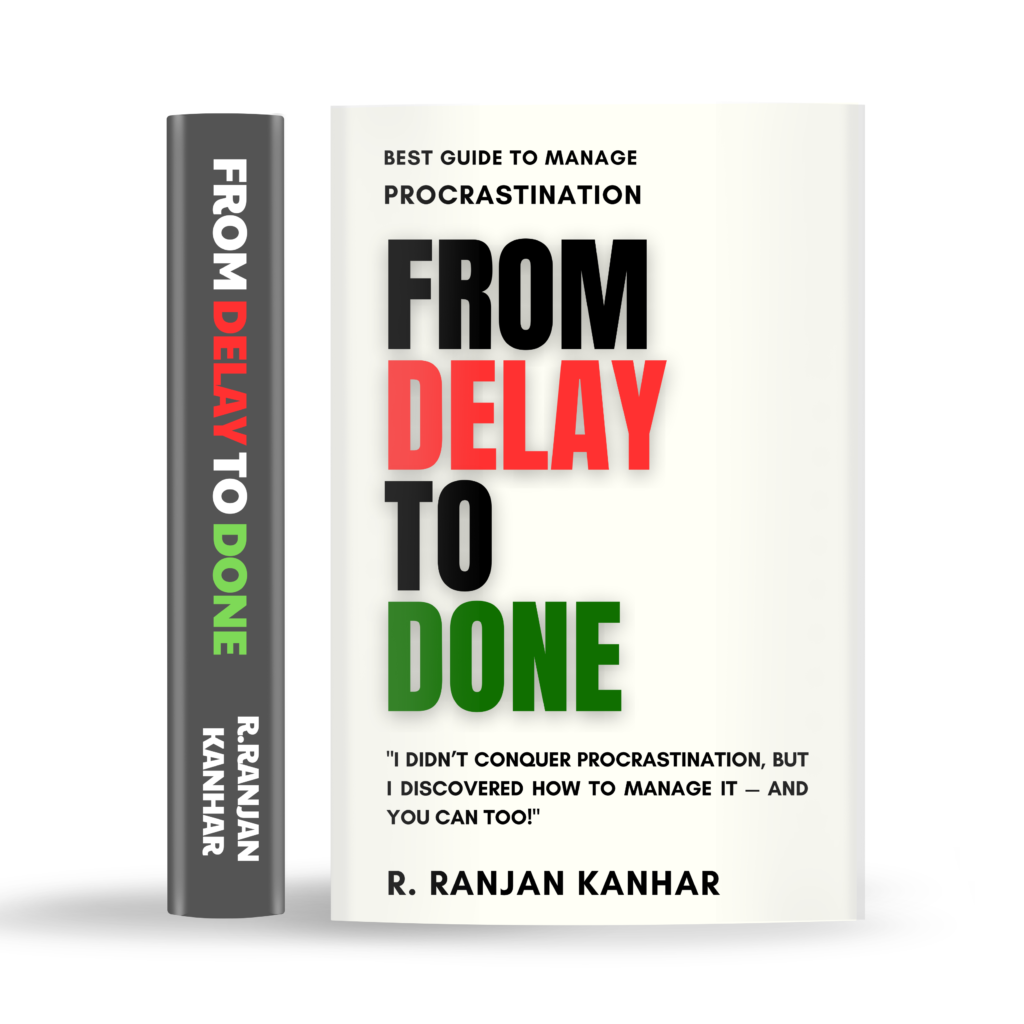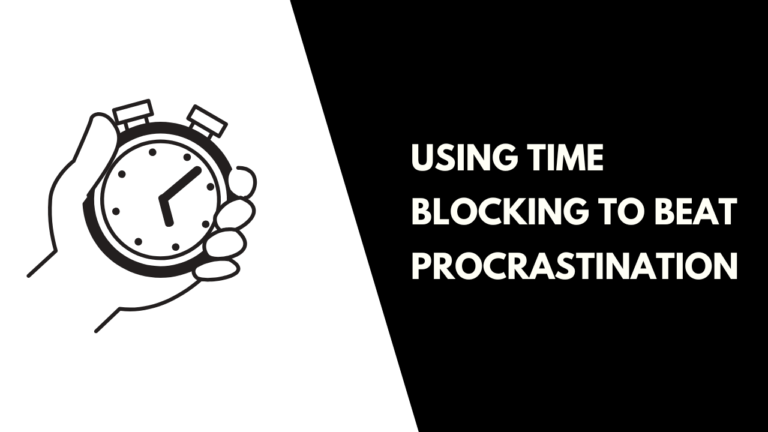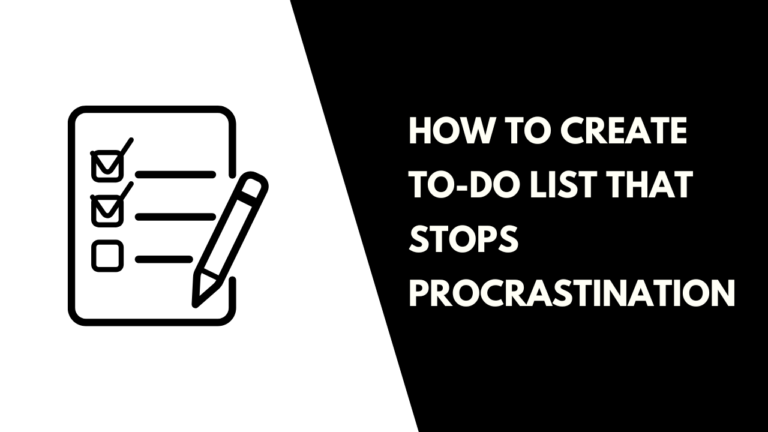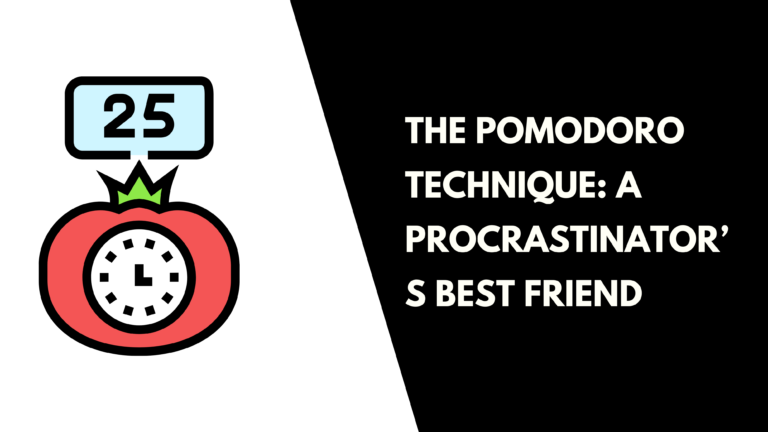How to Use a Planner to Stop Procrastination
How to Use a Planner to Stop Procrastination
1. Introduction
Briefly explain procrastination and its impact on daily life:
Procrastination is a common habit where we delay tasks that need to be done, often opting for easier, less important activities. While it feels momentarily rewarding, it causes stress and anxiety in the long run. For instance, putting off studying for a big exam leads to last-minute panic. Procrastination creates a cycle of guilt and stress, which can affect personal productivity and mental well-being.Table of Contents
ToggleIntroduce the concept of using a planner to beat procrastination:
One of the most effective ways to beat procrastination is by organizing your tasks with a planner. A planner helps you visualize your schedule, create structured plans, and make your goals feel more achievable. By breaking down larger tasks into smaller, manageable chunks, you can tackle them more easily.Highlight the benefits of planning:
Using a planner provides several benefits:- Better time management: It ensures that you dedicate time to tasks.
- Reduced stress: Knowing what needs to be done and when provides clarity.
- Increased productivity: A plan keeps you focused and motivated to finish tasks.
2. Understanding Procrastination
Define procrastination and discuss its causes:
Procrastination is the act of delaying or postponing tasks, often without valid reasons. It is driven by several factors:- Fear of failure: You may avoid tasks because you’re scared of not doing them well.
- Lack of motivation: Without clear goals, it’s easy to lose interest in the task.
- Perfectionism: Wanting everything to be perfect can prevent you from starting tasks in the first place.
Example: A student may delay starting a project because they fear it won’t be perfect, or an employee might avoid a challenging report due to a fear of failure.
Explain how procrastination affects different areas of life:
Procrastination not only affects work or school performance but also personal well-being. It leads to unfinished tasks, growing stress, missed deadlines, and lost opportunities. For example, procrastinating on paying bills can lead to late fees, while putting off exercise can affect physical health.
3. The Power of Planning
Discuss the importance of having a clear plan:
A well-structured plan creates clarity and purpose. When you plan your day, week, or month, you gain a sense of direction. Instead of feeling overwhelmed by a pile of tasks, you’ll have a concrete list of what needs to be done and when. This clarity significantly helps in reducing procrastination.Example: Imagine you have a huge project due in a week. Without a plan, it’s easy to feel overwhelmed and push it aside. But if you break it down into smaller tasks, such as research, drafting, and revising, the project feels more manageable.
Explain how planning breaks down large tasks into smaller, manageable actions:
Breaking tasks into smaller, actionable steps makes it easier to start. A task like “write a report” can be broken down into subtasks like “outline the report,” “gather data,” “write the introduction,” and “proofread.” This process makes the task feel less daunting and easier to begin.Mention the psychological benefits of planning:
Planning offers psychological rewards. Knowing exactly what to do and when relieves anxiety and builds confidence. Achieving small goals creates a sense of accomplishment, which motivates you to keep going.
4. Choosing the Right Planner for You
Overview of different types of planners:
- Digital vs. Paper Planners: Digital planners (e.g., Google Calendar, Trello) are great for tech-savvy people who prefer flexibility and reminders. Paper planners, on the other hand, offer a tactile experience and are preferred by those who enjoy writing by hand.
- Daily vs. Weekly Planners: Daily planners are ideal for people who need to focus on short-term tasks and appointments. Weekly planners provide a bigger picture and are good for people who need to balance multiple responsibilities over several days.
Tips on selecting the planner that fits your personality:
If you’re someone who enjoys using technology, digital planners with reminder notifications may work best for you. However, if you find writing by hand helps with focus, a paper planner would be more suitable. Additionally, for a highly structured day, a daily planner can help you schedule tasks hour by hour. A weekly planner is better for those who prefer flexibility and an overview of their week.
5. Steps to Effectively Use a Planner to Beat Procrastination
Step 1: Set clear, achievable goals:
Start with specific, measurable, and realistic goals. Instead of saying “finish my report,” say “complete the first draft of my report by 3 PM.” Breaking your goals down like this makes them feel more achievable, thus reducing procrastination.Example: A goal like “finish reading a book” can be broken down to “read 20 pages by the end of the day.”
Step 2: Break down tasks into smaller steps:
Breaking tasks into smaller, manageable parts helps eliminate feelings of overwhelm. It also gives you clear checkpoints along the way. For example, instead of writing a “5-page essay,” you could set smaller steps: “Write the introduction,” “research 3 sources,” and “complete the conclusion.”Step 3: Prioritize tasks based on urgency and importance:
Use a system like the Eisenhower Matrix to prioritize tasks:- Urgent and important: Do these tasks first.
- Important but not urgent: Schedule these for later.
- Urgent but not important: Delegate these if possible.
- Neither urgent nor important: These can be eliminated.
Step 4: Allocate time blocks for each task:
Time-blocking is a technique where you allocate a set amount of time to work on specific tasks. This method helps you avoid distractions and ensures that tasks get done. For example, “From 9 AM to 11 AM, I will work on the first draft of the project.”Step 5: Regularly review and adjust your plan:
Life doesn’t always go as planned, and that’s okay. Regularly reviewing your planner allows you to make adjustments. If you’re falling behind, break tasks into smaller chunks, move deadlines, or re-prioritize tasks.
6. Overcoming Common Obstacles to Using a Planner
- Forgetting to use the planner: Set daily reminders on your phone to check your planner each morning. Make it a habit by reviewing it the night before to prepare for the next day.
- Procrastinating on planning: You might put off planning because it feels like an extra task. Start small—spend just five minutes a day planning your tasks. Over time, you’ll see how much easier it is to beat procrastination with a solid plan.
- Feeling overwhelmed: Keep your planner simple. Use colors or symbols to highlight important tasks and reduce complexity.
7. Tracking Progress and Celebrating Wins
- Importance of tracking progress: Tracking your progress in your planner helps reinforce the habit of completing tasks. It shows you how much you’ve achieved and can motivate you to continue.
Example: After completing a task, mark it with a checkmark or cross it out. This gives you a sense of accomplishment.
- Celebrating small wins: Celebrate even the small victories! Finishing a task ahead of schedule or sticking to your plan can be motivating. Treat yourself to something you enjoy, like a coffee break or watching an episode of your favorite show.
8. Conclusion
Recap how using a planner helps beat procrastination: By using a planner, you break down overwhelming tasks, prioritize effectively, and set clear goals. This structure can help you manage your time and focus better, allowing you to beat procrastination.
Offer final tips on integrating planning into daily life: To make planning a habit, start by using your planner consistently for just a week. Set aside a few minutes every morning or night to review and organize your tasks. The more you plan, the less you’ll procrastinate.
Encourage readers to take action: Don’t wait for the perfect time. Start using your planner today to beat procrastination and see the difference it can make in your productivity and stress levels.
“Stop postponing your dreams! From Delay to Done is your ultimate guide to conquering procrastination. Grab your copy today on Amazon!
